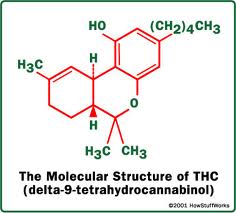
*Industrial hemp and marijuana are both classified by taxonomists as Cannabis sativa, a species with hundreds of varieties. C. sativa is a member of the mulberry family. Industrial hemp is bred to maximize fiber, seed and/or oil, while marijuana varieties seek to maximize THC (delta 9 tetrahydrocannabinol, the primary psychoactive ingredient in marijuana).
*While industrial hemp and marijuana may look somewhat alike to an untrained eye, an easily trained eye can easily distinguish the difference.
*Industrial hemp has a THC content of between 0.05 and 1%. Marijuana has a THC content of 3% to 20%. To receive a standard psychoactive dose would require a person to power-smoke 10-12 hemp cigarettes over an extremely short period of time. The large volume and high temperature of vapor, gas and smoke would be almost impossible for a person to withstand.
*If hemp does pollinate any nearby marijuana, genetically, the result will always be lower-THC marijuana, not higher-THC hemp. If hemp is grown outdoors, marijuana will not be grown close by to avoid producing lower-grade marijuana.
*Hemp fibers are longer, stronger, more absorbent and more mildew-resistant than cotton.
*Fabrics made of at least one-half hemp block the sun’s UV rays more effectively than other fabrics.
*Many of the varieties of hemp that were grown in North America have been lost. Seed banks weren’t maintained. New genetic breeding will be necessary using both foreign and domestic “ditchweed,” strains of hemp that went feral after cultivation ended. Various state national guard units often spend their weekends trying to eradicate this hemp, in the mistaken belief they are helping stop drug use.
*A 1938 Popular Mechanics described hemp as a “New Billion Dollar Crop.” That’s back when a billion was real money.
*Hemp can be made in to a variety of fabrics, including linen quality.
*The hemp plant belongs to the mulberry family, Moraceae





